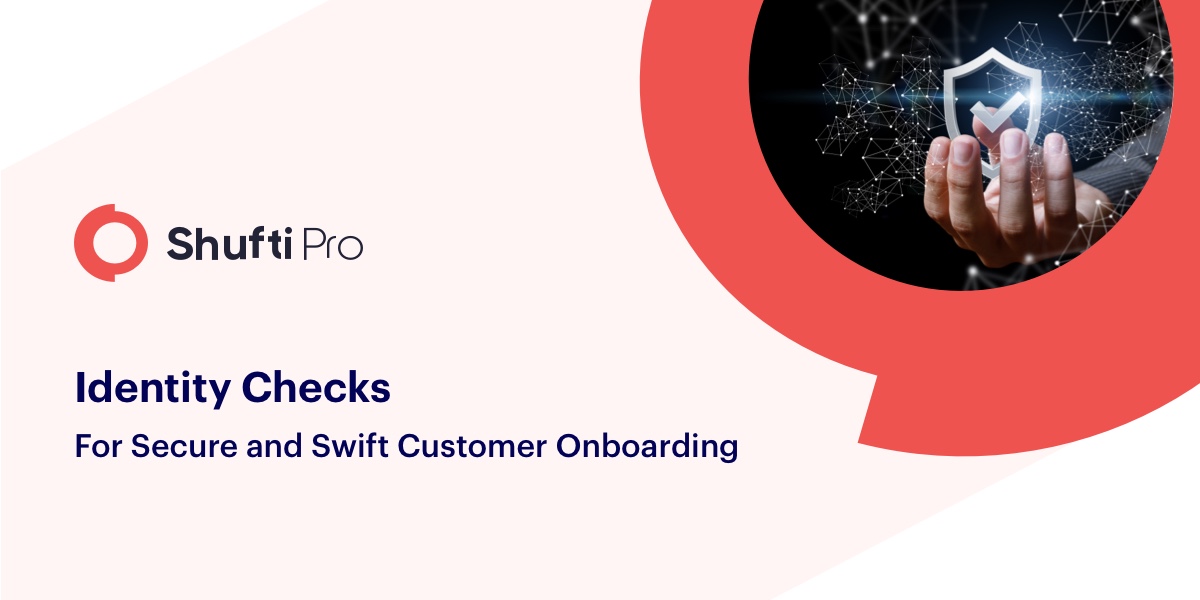Digital Identity checks for secure and swift customer onboarding

The digital transformation of businesses continues apace, driven in part by regulations that mandate enhance customer privacy and protection. Other driving forces of digital transformation includes technologically sophisticated consumers, the global increase in the use of digital channels, as well as protecting firms and consumers from financial crimes.
While speed and security are two basic things customers demand when opening a bank account, when it comes to customer identification and verification, the manual process can be slow and tedious, in turn contributing to high customer abandonment rates. On top of this, humanly errors could lead to inaccurate results.
According to a recent Refinitiv survey, 53% of the respondents confirmed that they undertake KYC verification checks during onboarding, but only 46% of these checks are successful. Interestingly, among the surveyed companies only those embracing digital identity checks appear to be more successful at performing KYC checks(47 per cent) than those who don’t use technology (28 per cent).
Survey also revealed that 51% of the relationships with clients had not been subject to any formal due diligence check during customer onboarding and only 39% of respondents confirmed that they perform ongoing identity checks in real-time after onboarding.
These compliance gaps could somehow justify why financial crimes remain widespread. Respondents overwhelmingly that digital identity checks can help to cover these gaps.
Secure identity checks are a regulatory requirement for all financial institutes including but not limited to banks, money service businesses, and investment banking. KYC and AML regulations demand running checks on any individual or business while opening an account.
Types of digital identity checks
Document Verification
Document verification is the process of verifying the identity of a person by matching the details mentioned in the authentic documents. Most of the time, government-issued ID cards, driving license, passports, bank statements and utility bills are used for verification.
Customers can scan ID documents using a webcam or upload a picture of their identity documents. The required information is then extracted using Optical Character Recognition (OCR) technology. The following information is validated in online document verification:
- First and Last Name of the user
- Forged or Photoshopped documents
- Document’s format type
- Document’s Expiry date
Address Verification
In the digital verification scenario, the address of an individual user or a business could be verified by asking the user to upload a picture holding ID document displaying their address. Secondary documents to be uploaded by the user should also contain the official address. The address on both of the documents is then matched and verified.
Knowledge-Based Authentication (KBA)
KBA is an online identification method that incorporates security questions that can only be answered by the authentic users. For instance, asking for the mother’s maiden name or name of your best friend.
It’s considered more secure than passwords because it’s easy to remember. However, these questions could easily be breached by guessing or social engineering.
2-Factor Authentication (2FA)
As an added security layer, 2FA combines two different authentication factors: something you know and something you have. It solidifies account protection by enabling an extra security layer. An email or an SMS with a verification code is sent to the user on their device that should be available to the user when accessing their account.
Passwords alone are not enough to prevent fraud. Hackers can easily breach passwords using different techniques such as brute force attack, phishing, and social engineering. This is why 2FA or two-step verification is a necessary identity check.
Face Verification
The biometric is the most robust identity check because it adds the most important authentication factor: something you are. Among different biometrics, fingerprints and face are the most used. With the advent of smartphone cameras, facial verification is the easiest way to verify the customer.
Users can upload a selfie or a video using their smartphone and at the backend, facial recognition technology immediately matches the selfie with the picture on ID document and authenticate customer in real-time and accurately.
Benefits of using digital identity checks
Digital identity checks are already being used by financial institutions. The benefits of using digital identity verification solution include:
- High accuracy and better compliance
- Time efficiency
- Enhanced security, as the outdated passwords, are easy to hack
- Low operational costs – Employing digital solutions reduces the manual labour and with it the cost involved in manual processing
- Enhanced customer experience
Performing identity checks at the speed that customer expects and with the security compliance and fraud prevention demands isn’t difficult to achieve if the right processes and right technologies are in place.










